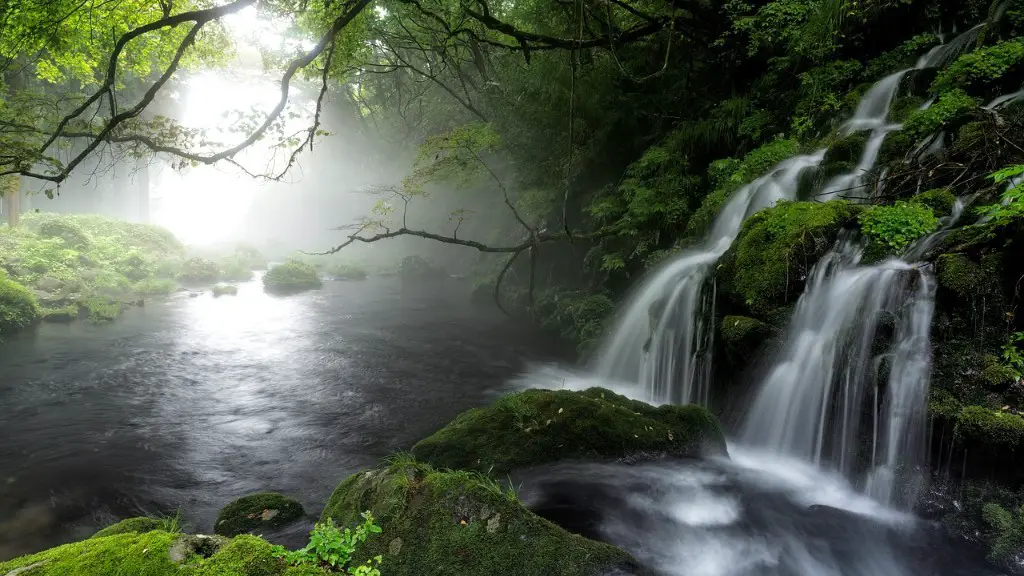Overview of the Mississippi River’s High Waters
The Mississippi River is one of the longest rivers in the United States, stretching from Minnesota to Louisiana. Over the past few months, the river has seen its water levels spike, causing flooding across much of the southern region. The high waters have led to millions of dollars in damages, along with the displacement of thousands of people. Experts fear that, unless the flooding stops, many areas of the river will likely suffer irreparable consequences.
Contributing Factors
In order to understand why the Mississippi River is so high, we must first consider the various contributing factors. The amount of snowfall experienced in the northern half of the United States has been on the rise in recent years, leading to a prolonged and exceptionally powerful snowmelt. The raging waters from the larger-than-normal pools of snowmelt have been steadily flowing south, leading to a surge in the water levels of the Mississippi River. The heavy rains in the southern United States have also heightened the river’s water levels. This increase in rainfall has caused a rapid rise in the water levels of the Mississippi.
Ramifications of the High Waters
The rising waters of the Mississippi have already left a considerable mark on the environment. Thousands of acres of farmland have been flooded, reducing crop yields. The destruction of homes and livelihoods have forced many people to relocate. The fisheries and aquatic wildlife have also been directly impacted by the high waters, with some species facing extinction due to the destruction of their habitats. In addition, catastrophic infrastructure damage has resulted in millions of dollars in losses for the region.
Likely Solutions
The Mississippi River is a naturally occurring phenomena, and as such can not be ‘solved’ overnight. Attempts to control the river’s water levels often comes with its own set of risks, as measures taken to reduce the water levels can also lead to long-term ecological damage. For example, the Army Corps of Engineers has constructed dams and other infrastructure to reduce the water levels, but these efforts are often met with criticism from environmental groups. As such, it seems that the best solution to the high waters of the Mississippi is to manage the water levels through better monitoring and flood control strategies, while simultaneously enforcing protective legislation to minimize any long-term consequences.
Economic Impact
The economic impact of the high waters of the Mississippi has been devastating. The flooding has caused an estimated $5 billion in damages, with much of these losses coming from the agricultural industry. The livestock industry has also been hard-hit, with many farmers losing thousands of dollars in animals. In addition, the flooding has caused extensive damage to public roads and infrastructure, resulting in millions of dollars in additional damages. These effects will likely take years to recover from, and in the worst cases may never be mitigated.
Environmental Impact
The spike in water levels of the Mississippi River has had a serious effect on the environment, with many species of fish and aquatic wildlife facing extinction due to the destruction of their habitats. The ecosystem of the river is a delicate balance, and the disruption of this balance has resulted in a multitude of consequences. The increased levels of sediment in the river have caused a decrease in oxygen levels, making it difficult for many species of aquatic life to survive. In addition, the flooding has resulted in a large amount of debris being swept downriver, leading to a disruption of the river bed and an overall decrease in water quality.
Political Action
The situation of the Mississippi River is a complex one, with many political, economic, and environmental factors playing a role in its potential resolution. Politicians at both the state and national level have already taken action, proposing various plans that would aim to reduce the floodwaters of the Mississippi. The states of Minnesota, Wisconsin, and Louisiana in particular have been at the forefront of these efforts, working with both the private sector and other state governments to develop an effective flood control strategy. However, for these plans to succeed, the collaboration between all stakeholders must be maintained in order for any meaningful change to take place.
Climate Change
An often overlooked factor in the flooding of the Mississippi River is the influence of global climate change. It is well known that human activities have caused a significant rise in the Earth’s average temperatures, leading to an increase in global precipitation. This increase in precipitation has contributed to the high water levels of the Mississippi, with some experts predicting that if the situation is not addressed, the flooding of the river may become a regular occurrence. As such, it is crucial that governments work to mitigate the effects of climate change in order to protect against future flooding of the river.
Health and Safety Concerns
The high waters of the Mississippi have also caused health and safety concerns for those living in affected areas. The tumultuous flooding has made it difficult for many to access safe drinking water, leading to a rise in waterborne illnesses. In addition, the stagnant waters of the river have created an ideal breeding ground for pests and diseases, making their way into homes and businesses. Finally, the disruption of roads and infrastructure has increased the risk of personal injury from car accidents, debris, and collapsing buildings.
Conclusion
The high waters of the Mississippi pose an immediate and long-term threat to the region. Aside from the direct economic impacts of the flooding, there are also a multitude of environmental, health, and safety concerns that must be addressed. Thus, it is essential that meaningful policy solutions are implemented in order to reduce the floodwaters of the Mississippi and minimize the damage caused by the high waters.


